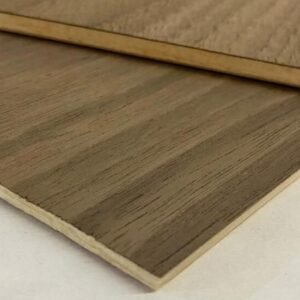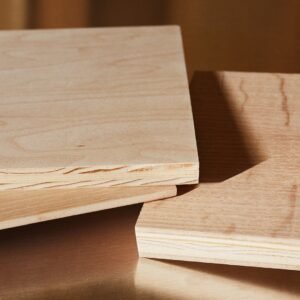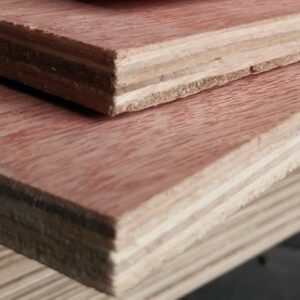Description
Mahogany Plywood
Knowing a little bit about both is a good idea when talking about mahogany plywood. You should first have a basic understanding of mahogany. The dark, rich hue of this species of wood develops with time, which is one of its charms. Despite beginning darker than many other woods, the reddish brown wood used to make things gets more defined with time. The color of African mahogany ranges from pale to dark.
Generally speaking, Mahogany Plywood has a close grain and is straight, yet the detailing might be curled or wavy. Its resistance to termites and decay is another factor contributing to its popularity as a material for manufacturing things. It is additionally defined as having a consistent, fine to course texture. In terms of weight, strength, and hardness, it is typically in the middle.
As a result, it’s a fantastic, stable wood to work with. Mahogany works wonderfully when crafted into furniture. This includes cutting, sanding, shape, and gluing, which are further factors in the success of mahogany plywood. Even though some small fill work is necessary, it also ends well.
Mahogany core is used to make mahogany plywood because it has a high shine, a straight texture, a fine, homogeneous structure, a light weight, and soft hardness. Low intensity; Due to its dry shrinkage, lack of scarring, and other qualities, it is employed in many rotary cutting veneer processing operations.
For hundreds of years, mahogany has been the material of choice for many nations around the globe. A related of the species that grows in the Americas is the species that is grown in Africa. Heartwood can have a ribbon-stripe appearance and ranges in color from medium to dark reddish brown.
plywood made for ships This is a great option for building boats. In fact, marine grade mahogany plywood is preferable than exterior grade when using it to construct anything that may be curved. Compared to exterior grade, the marine grade has a tendency to bend without cracking and with more homogeneity. Mahogany is naturally resistant to fungi and molds, which is another reason it is suitable for making boats.
Being cautious of fake materials is one way to be safe when deciding where to get your mahogany plywood. When purchasing mahogany plywood, be aware of this as there is no labeling regulation. Grade A plywood from one factory may be significantly less superior in quality from one manufacturer to another since plywood grading is decided by the producer, not by any regulation or regulatory organization.
<< Click Here To Contact Factory >>

Mahogany Plywood Features
- African mahogany ornamental veneer that has been ethically sourced from Africa is featured on this panel.
The decorative top and bottom veneers, which are each about 1/50′′ thick, showcase the allure and classic character of real hardwood that can be stained or painted. - 100% natural wood makes up the veneer core, which is put together using a soy-based, formaldehyde-free method.
- Create furniture, cabinets, and other items with ease.
- Excellent tensile strength and endurance in settings with a lot of moisture and salt
accurately put together to avoid gaps or holes between the layers
Outstanding dimensional stability, high levels of planarity, and resistance to warping. - It has great screw pullout strength and is simple to produce.

Application
Mahogany veneers are a popular material for furniture and interior design because of their strength and beauty. They can be utilized to make unique furniture pieces like tables, chairs, and cabinets that are both practical and fashionable.
Additionally, they can be utilized to cover walls and ceilings, giving any area a sense of sophistication and opulence. They can also be used to make paneling, moldings, and other decorative embellishments. These veneers are a fantastic option for anyone wishing to add a touch of luxury to their home or business because of their adaptability and durability.
Environmental
Tropical rainforests are a common supply of mahogany trees, but illicit logging and unsustainable harvesting methods there can hasten deforestation. You must make sure that the mahogany plywood you select originates from plantations or forests that are responsibly maintained. To verify appropriate forest management, look for certificates like the Forest Stewardship Council (FSC) accreditation.






